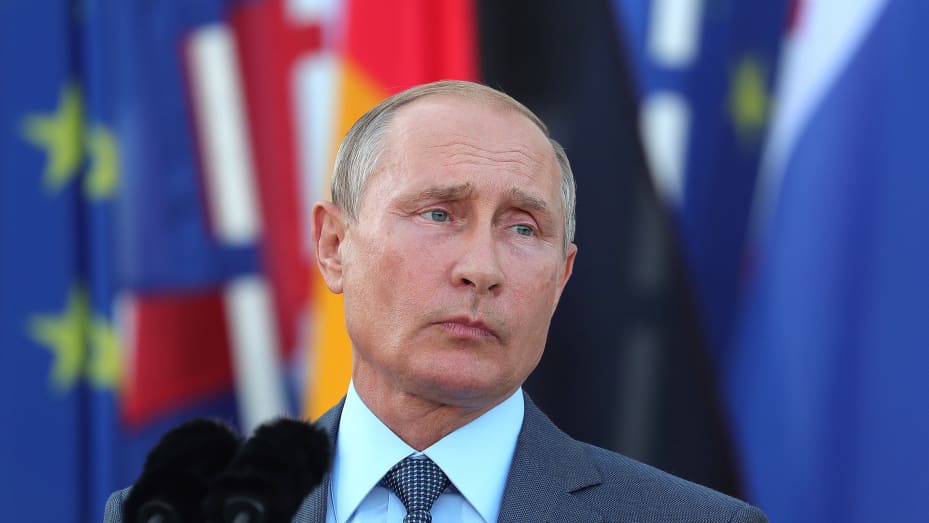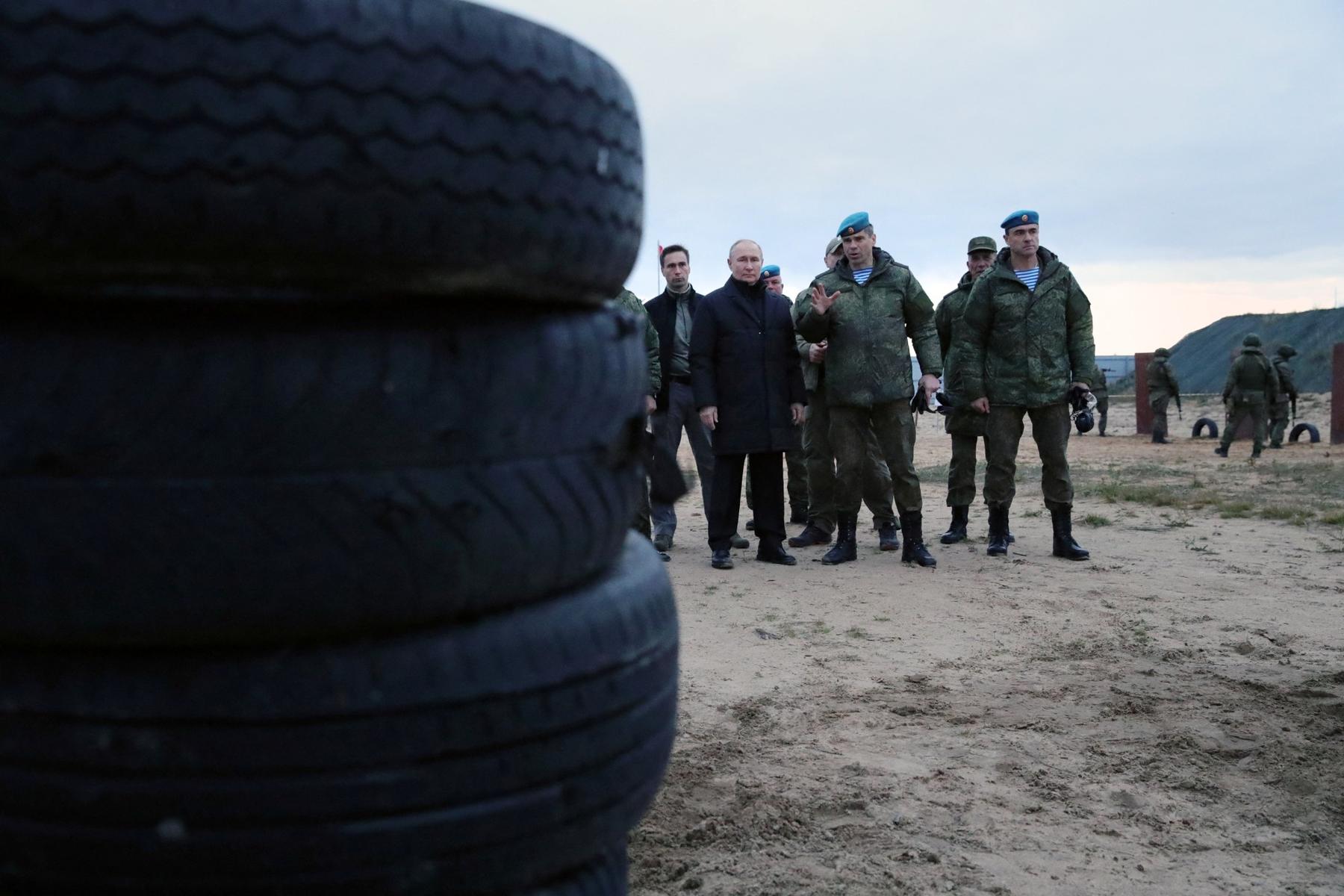US Intelligence Reports 87% Loss of Russian Troops Since Start of Ukraine War; Caught In Catch 22 Situation, How Long Can Both Countries Maintain Their Stance?
As the Ukraine war sees no signs of ebbing, a declassified US intelligence assessment paints a sobering picture of Russia's military predicament. Shockingly, the nation has witnessed an 87% reduction in active-duty ground troops and a significant decline in pre-invasion tanks. Despite these formidable losses, President Vladimir Putin remains resolute in advancing the conflict, posing a persistent threat to Ukraine as the war approaches its two-year anniversary - the key findings of the intelligence assessment, shedding light on Russia's struggles, the challenges faced, and the ongoing diplomatic efforts to secure crucial aid has become the focal point for Ukraine, even as Russia pays a heavy price for the ongoing war.

According to a declassified US intelligence assessment disclosed to Congress, Russia has experienced a substantial depletion of its military forces, with a staggering 87% loss in active-duty ground troops and a two-thirds reduction in pre-invasion tanks.
However, despite these heavy casualties and equipment losses, Russian President Vladimir Putin remains steadfast in advancing the war, which is nearing its two-year mark early next year.
US officials caution that Ukraine remains highly susceptible, emphasizing that a long-anticipated Ukrainian counteroffensive has faltered, and major territorial gains are unlikely in the coming months.
The assessment, transmitted to Capitol Hill on Monday, coincides with some Republicans expressing reluctance to allocate additional funding for Ukraine. Simultaneously, the Biden administration is intensifying efforts to secure supplementary funding from Congress.
Ukrainian President Volodymyr Zelensky is currently in Washington, engaging with US lawmakers and President Joe Biden in a desperate attempt to secure crucial military and economic aid for Ukraine’s ongoing struggle against Russia.

Russia’s Military Challenges
Despite sustaining significant losses, Russia has sustained its war effort by relaxing recruitment standards and utilizing older equipment from Soviet-era stockpiles. However, the assessment spotlights that the conflict has severely impeded Russia’s 15-year effort to modernize its ground forces.
The assessment reveals that out of the 360,000 troops that entered Ukraine, including both contract and conscript personnel, Russia has lost 315,000 on the battlefield.
Additionally, 2,200 out of 3,500 tanks, and 4,400 out of 13,600 infantry fighting vehicles and armored personnel carriers have been destroyed, constituting a 32% loss rate.
The report notes that as of late November, Russia has forfeited over a quarter of its pre-invasion stockpiles of ground forces equipment, significantly reducing the scale and complexity of its offensive operations, which have failed to achieve major gains in Ukraine since early 2022.
The toll on the Russian military is apparent since the October offensive, with over 13,000 casualties and 220 combat vehicle losses along the Avdiivka-Novopavlivka axis, equating to the depletion of equipment equivalent to six manoeuvre battalions.
Russia’s military strength, initially totalling approximately 900,000 active-duty troops, has surged with plans to expand to 1.5 million since the invasion’s commencement. The Russian Ministry of Defense has implemented multiple conscription rounds, including the regular fall cycle on October 1.
Notably, Russia has turned to unconventional tactics, involving convicts mobilized by the Wagner Group, and adjusted the age limit for certain citizens to remain in the reserve of the Armed Forces of the Russian Federation; strategic shifts that show the evolving nature of Russia’s military approach in the ongoing conflict.
The Funding Dilemma and Military Strategy For Ukraine
The most significant threat to Ukraine emerges from the political conundrum in Washington.
A faction of Republicans adamantly opposes any additional funding, while Senate Republicans insist on folding it into a broader spending package, encompassing allocations for Israel, Taiwan, and the US southern border.
Simultaneously, the Biden administration issued a stark warning that funds for Ukraine will soon be depleted.
Senator J.D. Vance, a Republican from Ohio, dismissed the notion that Ukraine could roll back Russia to its 1991 borders as absurd and urged the president to clarify the ambition behind the $61 billion funding request, questioning its effectiveness compared to the previously allocated $100 billion.
Newly declassified intelligence indicates that Russia anticipates a winter military deadlock, counting on the diminishing Western support for Ukraine to ultimately shift the advantage in Russia’s favour.
Russia pursues this strategy despite losses and ongoing shortages of personnel, munitions, and equipment, according to a National Security Council spokesman, Adrienne Watson.

Russia Balancing War Expenditure And Economic Fallout
Russia, embroiled in the Ukraine conflict, faces a financial conundrum even as its war expenditure remains shrouded in secrecy, coinciding with unprecedented Western sanctions that have inflicted a severe shock on the nation’s economy.
Despite the economy surpassing early expectations of a double-digit contraction in 2022, the path to recovery is prolonged, with increased government spending on the military.
Economic Impact and Growth
Russia’s economy, impacted by stringent Western sanctions, defies earlier projections with a 1.5% growth forecast for the current year after a 2.1% contraction in 2022, as estimated by the International Monetary Fund (IMF).
However, IMF spokesperson Julie Kozack warns of long-term impediments, including multinational departures, human capital loss, financial market disconnection, and diminished policy buffers, anticipating a 7% reduction in output compared to pre-war forecasts over the medium term.

Defence Spending and Fiscal Challenges
In response to escalating war costs and tightening sanctions, Russia has doubled its 2023 defence spending target to over $100 billion, constituting a third of all public expenditure.
This heightened military expenditure strains Moscow’s finances, amplifying the challenge of maintaining a manageable budget deficit. The country is grappling with the loss of a significant share of the European gas market, sanctions on oligarchs, and disruptions in sourcing critical items like microchips.
Global Market Exclusion and Risk of Economic Dependency
Russia’s exclusion from Western financial markets, coupled with sanctions on key figures, has led to a complex economic scenario.
Additionally, the nation defaults on foreign bonds for the first time since the aftermath of the 1917 Bolshevik revolution, accentuating the gravity of its economic challenges.

Russia’s Economic Toll in the Ongoing War with Ukraine
The financial repercussions of Russia’s ongoing war with Ukraine are becoming increasingly evident as the conflict extends its grip.
From the first day of the invasion, economic sanctions have hammered the Russian economy, sending shockwaves through its financial systems, international investments, and key sectors.
Early Economic Shockwaves
The economic impact was swift and severe. The Russian stock market, as represented by the RTS Index, plummeted by up to 39% immediately after the invasion.
The Russian ruble hit record lows as citizens rushed to exchange currency; Moscow and St. Petersburg stock exchanges faced an unprecedented suspension, marking the longest closure in Russia’s history.
S&P Global Ratings downgraded Russia’s credit rating to “junk,” impeding further borrowing and making financial recovery an uphill battle.
Corporate Exodus and Investments Disrupted
Global corporations, including BP and Shell, initiated divestments from Russian assets, with BP’s projected loss reaching up to $25 billion.
The world’s largest sovereign wealth fund, Norway’s Government Pension Fund, and major shipping companies like Maersk suspended investments and shipments to Russia. The once-attractive investment climate swiftly turned hostile, prompting a corporate exodus.

Brain Drain and Information Technology Exodus
Russia is also grappling with a significant brain drain, with over 300,000 mainly younger Russians emigrating, including a substantial number of tech industry professionals.
More than 50,000 Russian information technology specialists have left the country; also, sanctions in the entertainment industry have even led Russia to consider the controversial step of legalizing software piracy.
Infrastructure Challenges and Defaults
Cyberattacks have added to Russia’s woes, with disruptions reported in critical sectors such as air transport; the lack of necessary backups for hacked data due to budget limitations underscores the vulnerabilities faced by key institutions.
Mixed Energy Sales Fortunes
Despite sanctions, Russia managed to increase the value of energy sales, leveraging its position as a major global exporter. Russia maintained a steady income by cutting gas supplies to Europe and diversifying sales to the Middle East and Asia.
However, the Russian budget faced a record deficit by August 2022, driven by a significant reduction in tax income from fossil fuel exports.
Recession and Reconstruction Costs
In November 2022, Russia officially entered a recession, marked by consecutive quarters of negative GDP growth.
Estimates suggest that the reconstruction of war-torn annexed territories, including Mariupol, could cost Russia between $100 and $200 billion. The state budget allocates only a fraction of this amount for rebuilding regions.

Daily War Costs and Factory Worker Shortages
The ongoing war in Ukraine takes a staggering daily toll on Russia, estimated between $500 million and $1 billion.
Furthermore, the country faced a record shortage of factory workers in July 2023, with over 43% of industrial enterprises grappling with workforce deficits.
GDP Contraction and Soaring War Expenditure
Russia’s GDP fell by 2.1% in 2022, with predictions of further declines by international organizations. The World Bank forecasts a 0.2% decline in 2023, while the OECD predicts a 2.5% contraction.
Russia’s war expenditure has skyrocketed to 37.3% of all budget spending, a staggering 2.5 times the pre-war average.
The Last Bit, As Russia manages these economic challenges, the toll of the ongoing conflict raises critical questions about the nation’s financial resilience, long-term sustainability, and the path to recovery.




